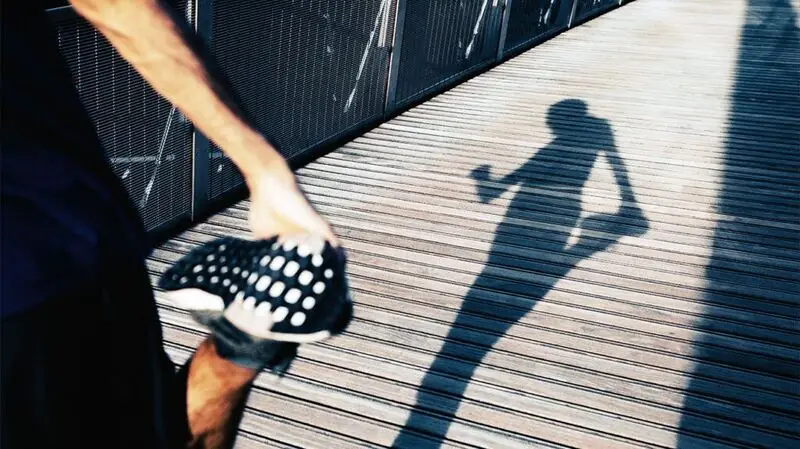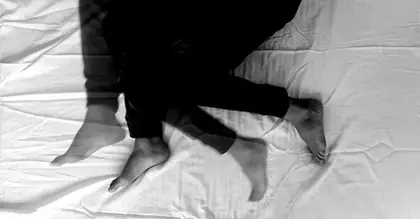
- Gait and balance changes are common as we age and can lead to falls.
- These changes are due to declines in sensory systems, such as eyesight and hearing, as well as the neuromuscular system.
- A new study has found that a person’s ability to balance on one leg may be a reliable indicator of neuromuscular aging.
- The study confirms that exercises to improve balance are important at all stages of life and should be continued into old age to prevent falls.
As healthcare and living standards improve, longevity is increasing worldwide. The World Health Organization reports that healthy life expectancy around the globe increased from 58.3 years in 2000 to 61.9 years in 2021. However, those extra years of life are not always healthy; in the United States, although the
In those later, less healthy years, many people will experience
The rate of neuromuscular aging varies greatly, and biological age — which evaluates the function of aging individuals and depends on genetics and environment — can differ widely from chronological age.
But how can we know who is likely to experience these age-related neuromuscular changes?
A new study, led by scientists at the Mayo Clinic, Rochester, MN, may have found a possible answer. It suggests that the ability to balance on one leg is a reliable indicator of neuromuscular aging in both men and women.
The study is published in
In their paper, the authors state:
“The importance of balance, especially in unipedal stance, arises from the fact that it requires multiple sensory inputs and neuromuscular control, in addition to adequate muscle strength. This is why balance on one leg, as demonstrated in our study, undergoes the fastest decline in our Healthy cohort.”
The researchers recruited 40 Healthy people ages 50 years and older for this small, cross-sectional study. Half were ages younger than 65 and half of them were ages 65 or older. They recorded participants’ age, height, weight, activity levels, and limb dominance before carrying out a series of measurements, which included:
- Grip (upper extremity) and knee (lower extremity) strength on the dominant side.
- 30-second standing balances — two legs with eyes open, two legs with eyes closed, dominant and non-dominant single leg with eyes open.
- Gait during level walking (using an optical motion capture system).
They also calculated the dynamic stability margin (the ability to maintain balance during movement) for level walking trials.
Both grip strength and knee strength were higher in men than women, but both sexes declined at the same rate of 3.7% per decade. There were no age-related differences in gait and dynamic stability.
However, movement during bipedal standing balances increased markedly with age, by 6.3% per decade for eyes open and 10.4% per decade for eyes closed, showing that balance declined with age.
The length of time a person could stand on one leg decreased with age for both sexes, declining at a rate of 2.2 seconds per decade for the non-dominant side and 1.7 seconds per decade for the dominant side.
The authors suggest these findings indicate that the neuromuscular sensory system declines faster than strength.
“As we age, our bodies begin to develop ‘wear and tear’ asymmetrically. We’re created with lots of redundancies in our bodies, so if one part of the body doesn’t work as well, others can help us adjust and maintain our abilities to perform tasks. If one leg is a little weak, the other can make up for it. However, when you take away one leg from supporting our bodies, such as when standing on one leg, a weak leg may not be able to support us.”
— William Buxton, MD, board certified neurologist and director of Neuromuscular and Neurodiagnostic Medicine and Fall Prevention Programs at Pacific Neuroscience Institute at Providence Saint John’s Health Center in Santa Monica, CA, who was not involved in the study.
People often focus on strength, flexibility, and endurance when exercising, but this study reinforces the importance of also working on balance throughout one’s lifetime. Maintaining balance as one gets older is particularly important to avoid falls that may result in bone fractures and other injuries.
Exercises that can easily be incorporated into daily life to improve your balance at any age include:
- Do step-ups.
- Do sideways walking, taking at least ten steps each way.
- Walk in a line heel to toe, putting one foot in front of the other, for a short distance.
- One-leg stands — bend one knee to lift your foot ahead of you until the knee is aligned with the hips. Repeat a few times on each side and get assistance from a chair or wall if needed.
When first doing the exercises, ensure that there is something stable to hold on to if you lose your balance. Some
Buxton echoed this advice, telling Medical News Today:
“This [study] emphasizes the importance of a good strengthening program in maintaining balance and overall health. One thing that is important for seniors (and those at any age too) is to maintain a good strengthening program. A good assessment by a physical therapist [PT] for someone feeling off balance can help identify subtle asymmetries in strength in the legs.”
“A PT can also look at our posture and strength of our core (back and abdomen), which strongly impact our legs. If our core is weak, especially if there are longstanding posture problems, there is often asymmetric pressure on nerves coming from the back to the legs, causing one leg to be a little weaker than the others. Optimizing the strength and tone of our torso is often crucial in optimizing leg strength and balance.”
— William Buxton, MD





